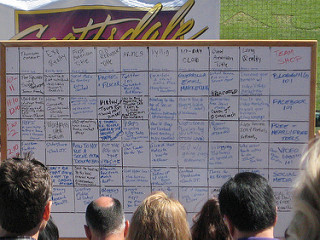5 Ways CLM Software Helps with Scheduling the Contract Processes
If you don’t know when contract processes are supposed to happen, they probably won’t happen! One of the main drawbacks of using isolated or paper-based contract management systems is the lack of visibility of the CLM process as a whole, and that’s just the beginning. On the other hand, using CLM software raises awareness of required contract processes across your enterprise and provides time and cost savings. Let’s review the many ways in which CLM software helps your enterprise with scheduling of contract relationships.
- Increase Visibility of Tasks Relationships
Among the top excuses for contract management failure is that team members are unprepared to complete tasks. However, taking a closer look to the reasons why those team members were unprepared often reveals that they weren’t informed that something would come up or that they were supposed to make room in their schedules for those processes in the first place.
This is not only a common issue with contract management but also in budgeting. When contract managers make decisions without a clear picture of the impact of those decisions in the workflows of other employees, contract managers are just making educated guesses. CLM software makes the entire contract lifecycle more visible, increases visibility of tasks relationships, makes everybody more aware of current workloads of other team members, and enables better scheduling of contract processes.
- Streamline Communication
If you’re relying just on email for all of the contract management needs of your enterprise, you’re holding back your enterprise’s ability to process and execute contracts faster. Email is not a replacement for contract management software.
No matter how much time you take to craft an email, it always remains static and no longer includes the latest revisions or edits by the time it’s opened by its recipient. Additionally, how are you planning to meet the compliance requirements from Sarbanes-Oxley with your email folder?
Through the use of CLM software, you can assign tasks to more than one team member at a time, alert team members with tasks preceding or following that one, and refer to documents that are always up-to-date.
- Automate Processes
A contract process that “fell through the cracks” is one of the most common scapegoat phrases for contract managers. Prevent this issue by setting up and scheduling processes in advance so that the appropriate team members are reminded of future tasks at the time number.
Contract renewal dates that are months or years ahead are a perfect example of the application of this CLM software feature. Leaving this contract process to the very last minute creates unnecessary stress for contract managers and undermines client relationships when those clients are forced to make decisions in a short period of time. Instead, set an automated email alert two months ahead of the contract renewal date to the appropriate person and build activities in the contract lifecycle of that client to make a better contract renewal proposal, explore cross-selling opportunities, and provide appropriate review time to the client.
- Start Task Before Prerequisites Are Complete
Simultaneously dropping a ton of assignments with the same deadline to a team member isn’t a good idea. Instead of setting up somebody to potentially miss one deadline, start tasks before required prerequisites are complete. While this may sound counterproductive, it buys team members time to understand the task, set everything up to the point that the necessary input is needed, and loosen up their workload.
This is particularly true when assigning contract process to external departments or offices in a different location. Providing more lead-time to complete tasks builds rapport among team members and allows them to complete tasks with an increased attention to detail. Having that extra time contributes to better implementation of compliance processes, too.
- Deliver Contingency Planning
Contract management isn’t immune to Murphy’s Law. It’s a given that “fires” will happen at some point. The key is to empower contract managers to take actions from a pre-approved selection of choices. Instead of figuring out from scratch a solution, you can set up pre-approved processes for certain common scenarios.
Here are some examples for your reference:
- How to Prevent the Subcontracting Squeeze
- An Overview of Best Efforts Clause Practices
- Client Management: How to Handle Three Difficult Scenarios
- What Contract Managers Can Learn from the Hanjin Shipping Bankruptcy
Providing turnkey contingency planning to common or exceptional situations enables contract managers, particularly new ones, to make timely and better informed decisions. All of this adding to the prevention of additional loss of time, minimization of potential damages, and improved risk control.
Takeaway
The benefits of contract management software are clear. By showing tasks relationships, streamlining communication, automating processes, starting appropriate tasks before prerequisites are complete, and making contingency planning easily accessible, a CLM solution helps with the scheduling of your enterprise’s contract processes.


